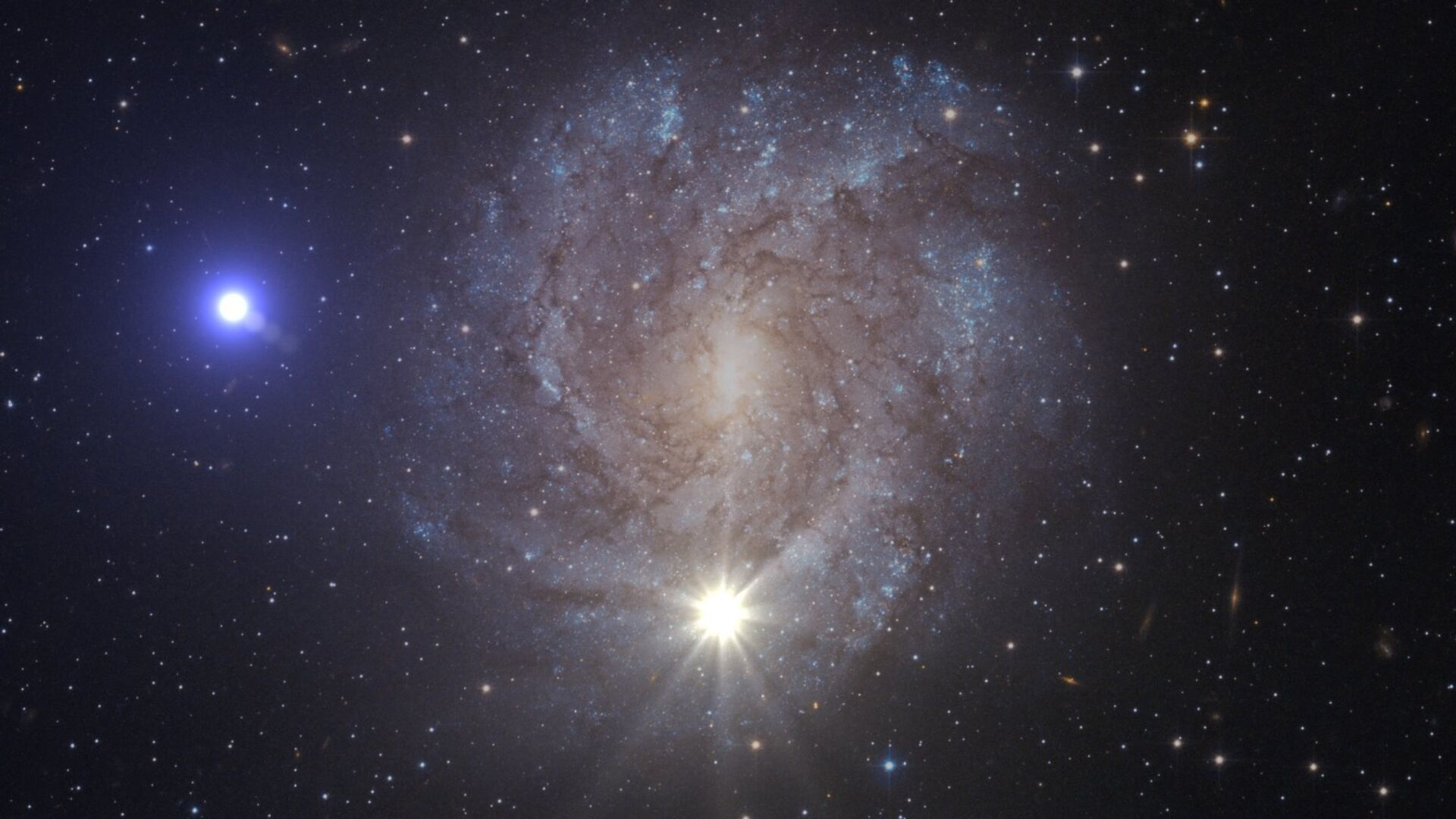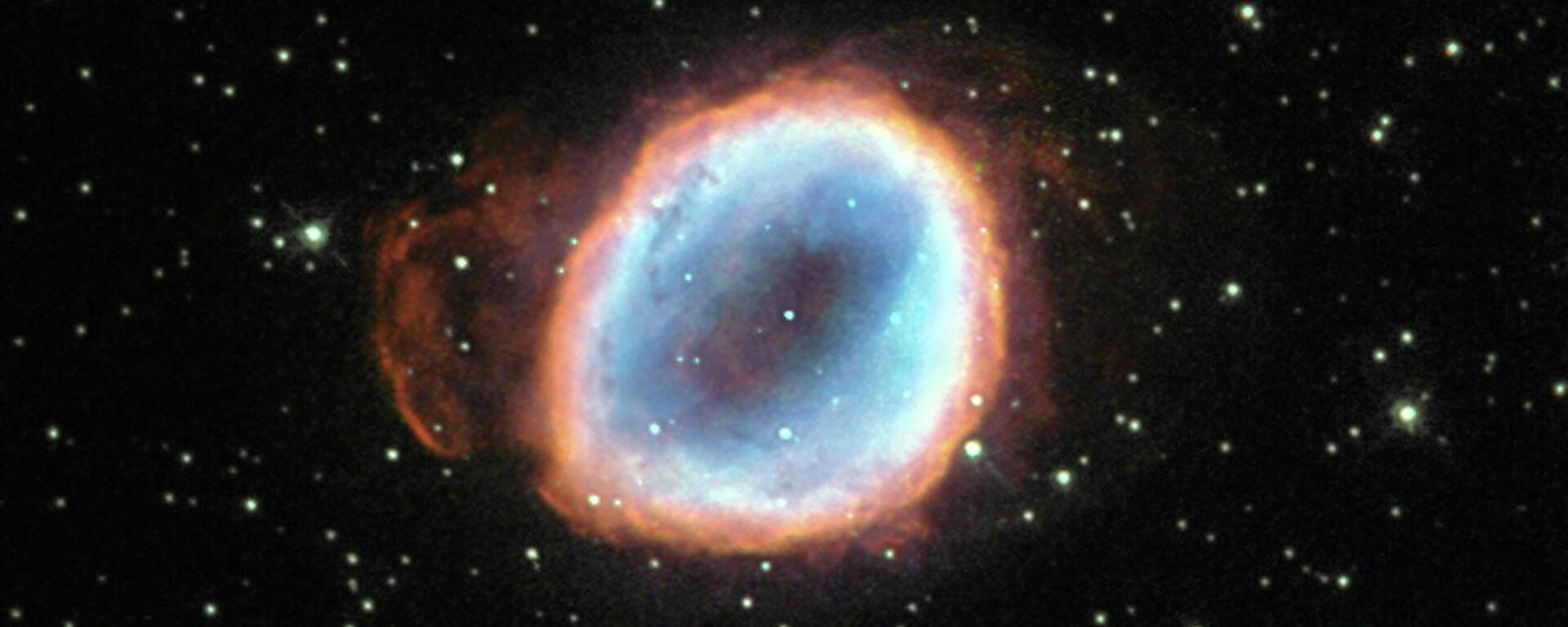https://sputnikglobe.com/20240225/cosmic-murder-mystery-solved-neutron-star-discovered-in-supernova-fallout-1116962728.html
Cosmic 'Murder Mystery' Solved: Neutron Star Discovered in Supernova Fallout
Cosmic 'Murder Mystery' Solved: Neutron Star Discovered in Supernova Fallout
Sputnik International
Stars die as they exhaust the fuel required for driving the nuclear reactions that enable their illumination. However, astronomers suggest that a huge stellar mass causes the gravitational force to destroy the atoms, forming either a neutron star or, for larger stars, a black hole.
2024-02-25T13:58+0000
2024-02-25T13:58+0000
2024-02-25T13:58+0000
beyond politics
science & tech
society
newsfeed
nasa
stockholm university
university college london (ucl)
james webb space telescope (jwst)
https://cdn1.img.sputnikglobe.com/img/101915/69/1019156920_0:152:1800:1165_1920x0_80_0_0_22397b01d67e8b62fbd4200b3aa26fc2.jpg
In February 1987, astronomers observed the death of a massive star as it blew up in a galaxy nearby - marking the first stellar explosion visible to the naked-eye in 400 years, according to BBC Sky.Spectacularly, the blue supergiant met its end in what a study team dubbed a supernova, designated as SN 1987A.New findings show that it was a neutron star - so dense that a mere teaspoon would weigh as much as 10 million tons. The research team "solved a murder mystery," Dr. Maggie Aderin-Pocock, BBC Sky at Night presenter, said.According to theory, stars die due to depleted fuel for nuclear reactions that power their brilliance. The immense stellar mass' gravitational pull compresses atoms, giving rise to the heaviest material in the cosmos, a neutron star. If the star is larger, however, it collapses to form a black hole. Which of these occurred in 1987?Using NASA's James Webb Space Telescope (JWST), the study team monitored the blue giant's death in the sky, aiming to validate theories about how stars meet their end. However, one critical detail remains unknown: what remained at its core following the cataclysmic event?In a recent article in the journal Science, researchers assert that they possess compelling evidence that it is a neutron star. This discovery holds significance for astronomers because supernovae scatter vital heavy elements essential for life across the universe.Professor Claes Fransson of Stockholm University in Sweden, who headed the study, noted that this signifies the first opportunity for scientists to explore the center of the supernova and the subsequent phenomena generated by it.New data illustrates a remarkable cooling process on the neutron star's surface, transitioning from an initial temperature of 100 billion to roughly one million degrees. This insight enables the team to study the early lifecycle of a neutron star and compare it with older counterparts to discern patterns of cosmic evolution over time.According to Prof. Mike Barlow of UCL, despite numerous indirect suggestions, JWST has now provided initial conclusive proof confirming it as a neutron star.Examining JWST data, a team of 34 scientists from 12 countries discovered light emissions from argon and sulfur atoms, suggesting the existence of powerful radiation emanating from a neutron star within the supernova.Dr. Robert Massey of the Royal Astronomical Society states that although there is no direct image of the neutron star, it would be challenging to attribute the readings to anything else.
https://sputnikglobe.com/20230530/rare-lopsided-supernova-blast-kicked-dead-star-across-galaxy-1110797175.html
Sputnik International
feedback@sputniknews.com
+74956456601
MIA „Rossiya Segodnya“
2024
Chimauchem Nwosu
https://cdn1.img.sputnikglobe.com/img/07e7/09/01/1113046371_0:99:1536:1635_100x100_80_0_0_9c5c627283eca931c39fe4852bbb301c.jpg
Chimauchem Nwosu
https://cdn1.img.sputnikglobe.com/img/07e7/09/01/1113046371_0:99:1536:1635_100x100_80_0_0_9c5c627283eca931c39fe4852bbb301c.jpg
News
en_EN
Sputnik International
feedback@sputniknews.com
+74956456601
MIA „Rossiya Segodnya“
Sputnik International
feedback@sputniknews.com
+74956456601
MIA „Rossiya Segodnya“
Chimauchem Nwosu
https://cdn1.img.sputnikglobe.com/img/07e7/09/01/1113046371_0:99:1536:1635_100x100_80_0_0_9c5c627283eca931c39fe4852bbb301c.jpg
supernova, neutron star, astronomers, blue supergiant, stellar death, jwst, cosmic evolution, scientific discovery, astrophysical research, stellar phenomena.
supernova, neutron star, astronomers, blue supergiant, stellar death, jwst, cosmic evolution, scientific discovery, astrophysical research, stellar phenomena.
Cosmic 'Murder Mystery' Solved: Neutron Star Discovered in Supernova Fallout
Stars die as they exhaust the fuel required for driving the nuclear reactions that enable their illumination. However, astronomers suggest that a huge stellar mass causes the gravitational force to destroy the atoms, forming either a neutron star or, for larger stars, a black hole.
In February 1987, astronomers observed the death of a massive star as it blew up in a galaxy nearby - marking the first stellar explosion visible to the naked-eye in 400 years, according to BBC Sky.
Spectacularly, the blue supergiant met its end in what a study team dubbed a supernova, designated as SN 1987A.
New findings show that it was a neutron star - so dense that a mere teaspoon would weigh as much as 10 million tons. The research team "solved a murder mystery," Dr. Maggie Aderin-Pocock, BBC Sky at Night presenter, said.
"It is about the death of a star and the mystery has been what lies in the shrouds of dust around what remains...The fact that it was visible gave it a celebrity status outside the world of science. And SN 1987A is also very close to the heart of astronomers because it was relatively close, and they were able to capture so much detail of the star's life cycle," according to Aderin-Pocock.
According to theory,
stars die due to depleted fuel for nuclear reactions that power their brilliance. The immense stellar mass' gravitational pull compresses atoms, giving rise to the heaviest material in the cosmos, a neutron star. If the star is larger, however, it collapses to form a black hole. Which of these occurred in 1987?
Using NASA's James Webb Space Telescope (JWST), the study team monitored the blue giant's death in the sky, aiming to validate theories about how stars meet their end. However, one critical detail remains unknown: what remained at its core following the cataclysmic event?
In a recent article in the journal
Science, researchers assert that they possess compelling evidence that it is a neutron star. This
discovery holds significance for astronomers because supernovae scatter vital heavy elements essential for life across the universe.
Professor Claes Fransson of Stockholm University in Sweden, who headed the study, noted that this signifies the first opportunity for scientists to explore the center of the supernova and the subsequent phenomena generated by it.
"We now know that there is a compact source of ionizing radiation, most likely by a neutron star. We have been looking for this from the time of the explosion but had to wait to be able to verify the predictions," Fransson told BBC Sky.
New data illustrates a remarkable cooling process on the neutron star's surface, transitioning from an initial temperature of 100 billion to roughly one million degrees. This insight enables the team to study the early lifecycle of a neutron star and compare it with older counterparts to discern patterns of cosmic evolution over time.
According to Prof. Mike Barlow of UCL, despite numerous indirect suggestions, JWST has now provided initial conclusive proof confirming it as a neutron star.
"The mystery over whether a neutron star is hiding in the dust has lasted for more than 30 years, and it is exciting that we have solved it," Barlow disclosed to BBC Sky.
Examining JWST data, a team of 34 scientists from 12 countries discovered light emissions from argon and sulfur atoms,
suggesting the existence of powerful radiation emanating from a neutron star within the supernova.
Dr. Robert Massey of the Royal Astronomical Society states that although there is no direct image of the neutron star, it would be challenging to attribute the readings to anything else.
''If we're lucky, then in the next few years, we might even see the neutron star in the center properly, getting a relatively close look at one of these intriguing objects very early in its life," Massey remarked.




